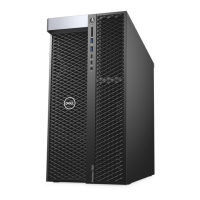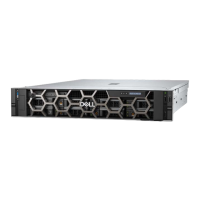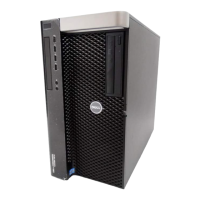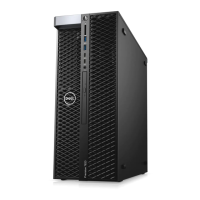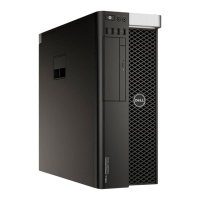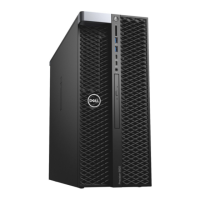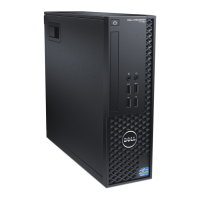Table 13. Sliding and Static Rails
Rail
identi
fier
Mounting
interface
Rail type Supported rack types
4-Post 2-Post
Square Round Thread Flush Center
B6 Ready Rails II Sliding √ √ √ X X
B4 Ready Rails Static √ √ √ √ √
NOTE: Screws are not included in either kit due to the fact that threaded racks are offered with a variety of thread
designations. Users must therefore provide their own screws when mounting the rails in threaded racks.
NOTE: Screw head diameter for the sliding rails must be 10 mm or less.
Other key factors governing proper rail selection include the following:
● Spacing between the front and rear mounting flanges of the rack
● Type and location of any equipment mounted in the back of the rack such as power distribution units (PDUs)
● Overall depth of the rack
The static rails offer a greater adjustability range and a smaller overall mounting footprint than the sliding rails. This is because
of their reduced complexity and lack of need for CMA support.
Table 14. Static Rails Adjustability
Rail
Identifier
Rail Type Rail Adjustable Range (mm) Rail Depth (mm)
Square Round Threaded without
CMA
with CMA
Min Max Min Max Min Max
B6 Sliding 676 868 662 861 676 883 714 845
B4 Static 608 879 594 872 604 890 622 N/A
Note that the adjustment range of the rails is a function of the type of rack in which they are being mounted. The Min/Max
values listed above represent the allowable distance between the front and rear mounting flanges in the rack. Rail depth without
the CMA represents the minimum depth of the rail with the outer CMA brackets removed (if applicable) as measured from the
front mounting flanges of the rack.
Cable management arm (CMA)
The optional cable management arm (CMA) organizes and secures the cords and cables exiting the back of the systems. It
unfolds to allow the systems to extend out of the rack without having to detach the cables. Some key features of the CMA
include:
● Large U-shaped baskets to support dense cable loads
● Open vent pattern for optimal airflow
● Ability to be mounted on either side by simply swinging the spring-loaded brackets from one side to the other
● Utilizes hook-and-loop straps rather than plastic tie wraps to eliminate the risk of cable damage during cycling
● Includes a low-profile fixed tray to both support and retain the CMA in its fully closed position
● Both the CMA and the tray mount without the use of tools via simple and intuitive snap-in designs
The CMA can be mounted to either side of the sliding rails without the use of tools or the need for conversion. However, it is
recommended that it be mounted on the side opposite to the power supplies to allow easier access to the power supplies and
rear hard drives (if applicable) for service or replacement.
Disassembly and reassembly 83

